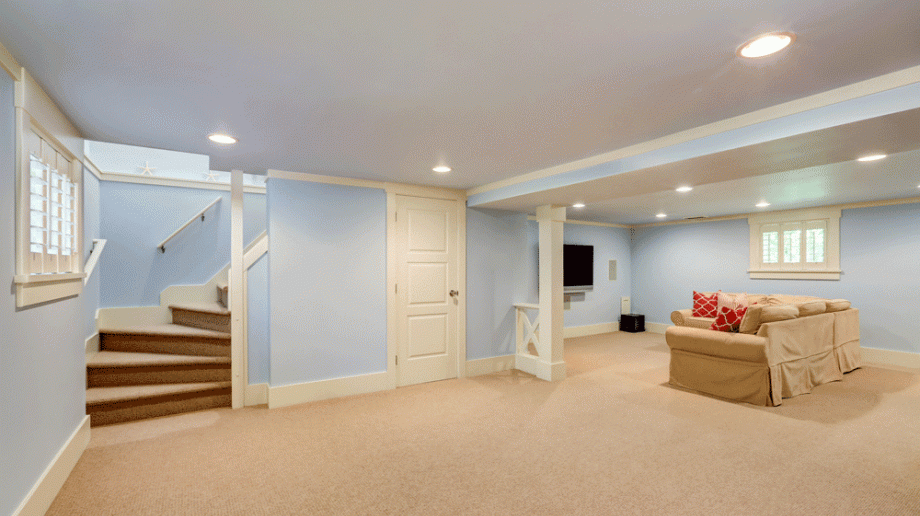
Basements in perspective
The Association of Specialist Underpinning Contractors explains why a balanced, evidence-led approach can turn basement development from a source of dispute into a sustainable way to create urban space.
For years, basement development has been the subject of heated debate in London planning circles. To some, the word “basement” conjures images of disruptive digs, flooding fears, or ecological loss. Yet the evidence from engineers, arboriculturalists, ecologists, and industry specialists paints a far more nuanced picture. Far from being the villain of urban development, a well-designed basement can provide much-needed living space, protect above-ground amenity, support biodiversity, and even outperform traditional extensions in sustainability terms.
As the London Borough of Camden’s new Local Plan is debated, and as basement policies such as the Royal Borough of Kensington & Chelsea’s have shown, it’s worth asking: is the negative perception fair? Or are we missing an opportunity to embrace a form of development that can meet housing needs, protect character, and deliver genuine environmental gains?
Basements as smart growth
In dense urban areas, the most precious commodity is space. Population pressures, housing shortages, and heritage constraints often leave little room to expand upwards or outwards. Basements allow homeowners and developers to create new floorspace without altering the skyline or encroaching on green space.
Unlike above-ground extensions, a basement under an existing property and its garden can preserve gardens, mature trees, and streetscape character. It can increase usable space and property value without exceeding height restrictions or reducing amenity, a major benefit in constrained sites.
Biodiversity: more potential gain than loss
A common argument against basements is biodiversity loss from soil removal. In reality, not all gardens have high ecological value. A paved or closely-mown lawn offers little for wildlife; replacing it with a landscaped roof over a basement, with one metre of high-quality topsoil, diverse planting, and space for large trees, can result in a net biodiversity gain. The key is not whether a basement is built, but how the garden is restored.
Trees can thrive over basements
Policies sometimes cap basement coverage to protect root zones, yet arboricultural evidence shows most UK tree species thrive in as little as 450–750 mm of fertile soil. A metre of engineered topsoil is “more than adequate” even for large trees, and replaced soil is often richer and less compacted than before, improving root growth.
Managing water and ground conditions
Public anxiety often centres on groundwater movement and flood risk. Hydrological studies show the impact of an individual basement is typically minimal, with cumulative effects manageable through proper assessment and design.
Modern Basement Impact Assessments (BIAs) involve detailed geotechnical, structural, and hydrological modelling by qualified professionals – a level of scrutiny exceeding most other home extensions.
Importantly, most urban flood events stem from surface water and overloaded drainage, not basements. The severe flooding in London in July 2021, when intense rainfall overwhelmed drains and flooded streets, highlights the need for borough-wide surface water management. Well-designed basements can play their part through sustainable drainage systems (SuDS) and robust waterproofing.
Sustainability and energy efficiency gains
Basements support circular economy principles by adapting existing buildings instead of demolishing them. They make use of otherwise wasted excavation space and can be integrated with foundations to optimise material use.
They also perform well thermally. Surrounded by insulating ground, basement walls lose 35-40 per cent less heat than above-ground equivalents. Their heavyweight construction provides thermal mass to regulate indoor temperatures, reducing heating and cooling demand – a growing advantage as UK summers warm.
Quiet, adaptable, and flexible space
The solid walls and earth insulation of a basement offer excellent sound attenuation, making them ideal for noisy activities such as music practice or home cinemas, without disturbing neighbours. Conversely, they provide quiet, secluded space for home offices, now in higher demand. Over time, a basement can shift use from storage to living quarters without major structural change.
Neighbour amenity: separating myth from reality
Any major building work, loft conversion, two-storey extension, or basement involves noise, dust, and traffic. Basements tend to concentrate heavy excavation at the start, making disruption more visible early on. The ASUC Guidelines on Safe and Efficient Basement Construction recommend best practice: robust temporary works, considerate hours, good neighbour communication, and careful soil removal. Many of these should apply equally to above-ground projects.
Trusted contractors: raising standards and reducing risk
Using accredited specialists reduces project risk. The Association of Specialist Underpinning Contractors (ASUC) sets high standards for technical skill, health and safety, and insurance cover. Members are independently audited and can offer insurance-backed guarantees tailored for basement works. By appointing an ASUC member early, homeowners can safeguard their investment and reassure neighbours and planners that the scheme will be delivered to the highest standards.
Policy pitfalls: arbitrary limits vs evidence-based regulation
Some policies impose blanket limits – such as covering no more than 50 per cent of a garden, without clear technical justification. Reviews of earlier rules found “no technical basis” for this figure and warned it could block harmless designs.
A more balanced approach to assess each scheme individually could involve evaluating existing ecological value; mitigating and enhancing where possible; and showing biodiversity, drainage, and tree planting will be sustained post-build.
This avoids arbitrary restrictions while still protecting community and environmental interests.
A call for balanced policy
Public opinion has often been shaped by high-profile headlines about large, multi-storey basement developments. However, rather than relying on broad-brush restrictions or outright bans, basement proposals should be assessed on a case-by-case basis. With appropriate professional involvement, for example through ASUC members, basements can be well-designed and carefully considered, reducing potential impacts and delivering significant benefits.
Studies show that, over a 44-year period, a basement extension is less carbon intensive than an equivalent above-ground extension. Likewise, research has demonstrated that 500–600mm of soil cover over a basement roof (and certainly the 1m often specified by planning authorities) is sufficient to support the growth of substantial trees.
Crucially, basement development also offers Local Planning Authorities a unique opportunity – not available with above-ground extensions – to require enhancements in: biodiversity; flood attenuation through SUDS; and green infrastructure and improved amenity space. Many of these benefits increase with larger developments rather than smaller ones.
Basements are not a universal solution, nor are they inherently harmful. Poorly designed schemes can cause problems – but so can poorly designed above-ground extensions. With the right design standards, construction safeguards, and post-build landscaping, basements can meet space needs without eroding urban character or green space.
Evidence from ecologists, arboriculturalists, engineers, and responsible contractors – supported by the Basements for Housing – Key Benefits report points to a clear conclusion: it is time to move from blanket restrictions to performance-based criteria. Does the scheme protect neighbours, enhance biodiversity, and maintain or improve drainage and soil quality? If so, it should be welcomed as part of a sustainable planning framework.
Handled well, basements can shift from a byword for controversy to a model of thoughtful, sustainable urban adaptation. By embracing evidence-led policy, local authorities can unlock the potential beneath our streets while safeguarding environmental and community interests.


